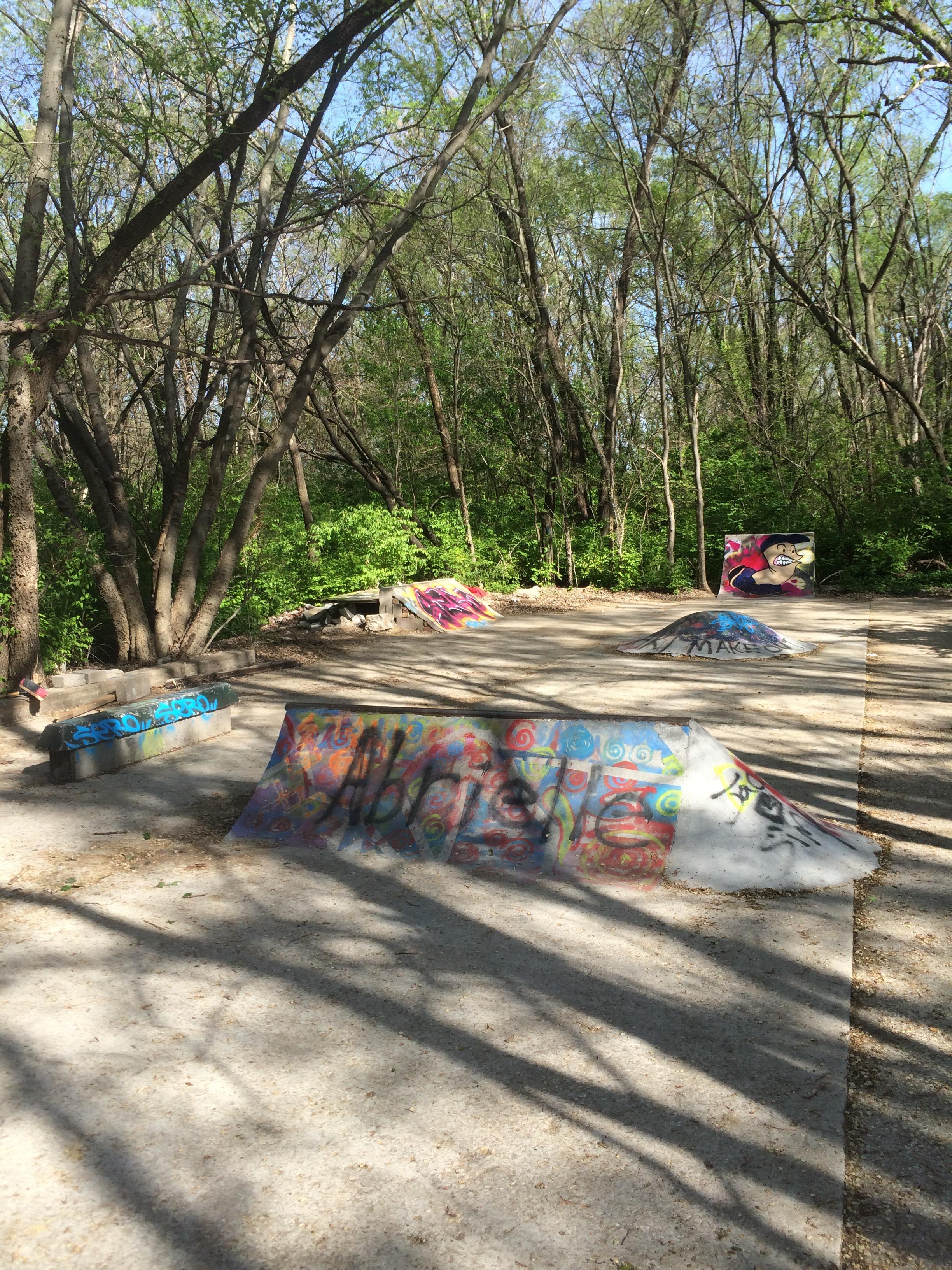After DIY skate park is dismantled, skaters look to other options
A strip of woods along the river in East Lawrence may seem an unlikely destination for skateboarders, but until recently it was the site of a do-it-yourself skate park that saw regular visitors. Though now only the concrete slab remains, a group of local skateboarders is hoping to bring ramps and rails back to the neighborhood.
The DIY Riverside Skate Park was recently dismantled by the City of Lawrence for lacking a permit and being in a federally designated conservation area, but members of the Lawrence Skaters Association didn’t want that to be the end. LSA members met this week with Lawrence Parks and Recreation officials with hopes that another location could be home to a permanent DIY skate park.
“I think that skating at Centennial (Skate Park) is one thing, but I think it’s hard for people from East and North Lawrence, especially if you’re young, to get out that way,” said LSA member Nicholas Ward. “So this was a really great space to come and skate.”

Riverside DIY Skate Park
The city has three skate parks, located at Centennial, Holcom and Deerfield parks, but none in the northeastern part of the city. Ward was one of those involved with the DIY Riverside Skate Park and said that the regular use of the park shows that there was an expressed need for such a space in that area of town.
Nevertheless, once city officials realized the park was there, there was no choice but to take it down because it was erected without going through the required planning and permit process, said Ernie Shaw, director of the Lawrence Parks and Recreation Department.
“It’s not necessarily a bad idea, but come through the process,” Shaw said. “… When we find something like that we can’t close our eyes and walk away, because the city is liable.”
The park was located just a few paces into the woods that face the Amtrak Station on East Seventh Street. It consisted of six concrete ramps about waist-high — including a spine ramp, quarter pipe, bank ramp — constructed on a slab that before lay under dirt and brush. Ward said the park was built up over the past three years.
“Each summer people would come together and have discussions about what was going to be built and where it would be placed — so, the design of the space,” Ward said. “And people would pool their money together to get bags of concrete.”

Members of Lawrence Skaters Association work on a ramp at the Riverside DIY Skate Park.
The idea of DIY skate parks is not one that began in Lawrence. Plans and tutorials for making DIY skate parks are easily found online, and they have been popping up in cities across the country. Some have been done with the knowledge of municipalities, such as the Harrison Street DIY in Kansas City, Mo., which transformed an unused cul-de-sac.
LSA member JP Redmon said the process is important. Redmon, who has been skating for 26 years, said the DIY Riverside Skate Park was a communal effort, in which skaters raised money, designed and then constructed the ramps as a group.
“It was awesome because we skateboarders had a chance to basically have a meeting of our minds and create these obstacles on our own,” Redmon said.
Though they were disappointed to see the their skate park dismantled, the skaters are determined to make something better.
“There’s a lot of positivity going forward in this,” LSA member Justin Shiney said. “I think it’ll be great and it’ll be good for everybody — move forward, build up and make something better.”
Shaw said Parks and Rec is always interested in collaborating with groups, and Ward, Redmon and Shiney met with Shaw and other City of Lawrence staff to discus a potential collaboration Tuesday.
The next step is to select potential locations for a DIY skate park. The city will be providing a list of several city-owned locations that aren’t currently in use, and Ward said the LSA will be visiting them in coming weeks to look for a good fit. He said the hope is to work in partnership with the city while also allowing skaters to take part in the design and construction of the park, much like the DIY project that inspired it.
“I think the type of ownership you get from imagining something and constructing something and collaborating is way different than something getting put there for you to use,” Ward said. “And a big way that these DIY spaces function is they’re giving that sense of ownership to the people who use it.”







